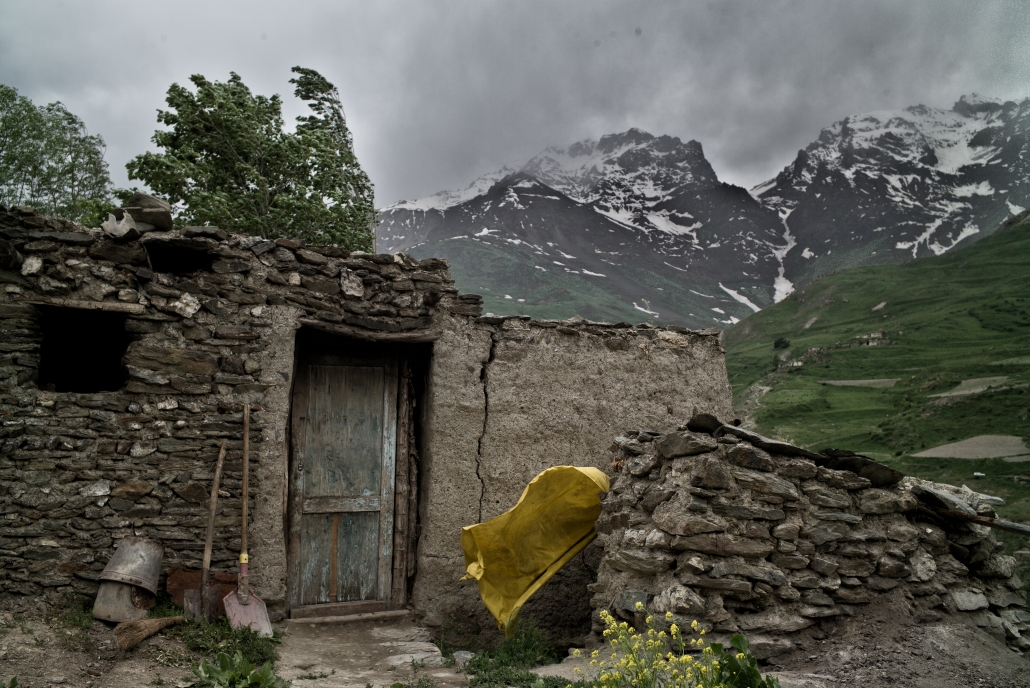This post is also available in:
 French
French
TAJIKISTAN
On March 10, 1970, when Kurboon Idliev was 23 years old, Soviet helicopters landed in the remote Yaghnob Valley in northwest Tajikistan and forcibly removed every person from their house. The entire Yaghnobi population (aprox. 3000 people) was transferred to the lower flatlands to work on cotton plantations. Those who resisted were killed. Villages were destroyed and their property was largely nationalised. It took 47 years before Kurboon returned to the valley again.
Only after the Perestroika were Yaghnobies officially allowed to make it back to their ancestral homes but a mere fraction returned to maintain their traditions. Others, like Kurboon, continued living in the low-lands and adapted to new and challenging conditions.
It was only when Kurboon’s son, Islam, was appointed as the only teacher in the Yaghnob valley and decided to marry Bibigul Huseynov, a local nurse, that his father made the journey back to the valley for the wedding.
The Yaghnobi people directly descend from the ancient Sogdian civilization of Central Asia, dating back to the end of the 6th century BC. The army of Alexander the Great invaded Sogdiana in the 4th century BC marrying the famous Sogdian princess, Roxana. Up to the Arab conquest of the 8th century AD Sogdiana formed part of different empires: Greek-Baktrian, Kushan, etc. It was during the Arab conquests that Sognians were forced to flee and established themselves in the isolated mountains along the Yaghnob valley.
The Yaghnob Valley is a valley situated in north-west of Tajikistan, between the Zarafshan and Gissar mountain ranges. The main road linking the Yagnob to the outer world crosses mountain paths which are only open during the summer. In the winter, the paths are covered in snow and constantly exposed to the risk of avalanches. In practice, Yagnobis stay completely largely isolated from the whole world for most of the year. Due to centuries of natural isolation and lack of access to infrastructure, the Yaghnobies have managed to preserve their distinct lifestyle, culture and language, Yaghnobi, which is closely related to ancient Sogdian (and currently under risk of disappearing). Zoroastrian beliefs and customs are still found in the valley today.
The presence of unique ethnic groups is not rare in Tajikistan and almost every valley in the highlands has its own unique culture and traditions. However, Yagnob is a very special case in the sense that approximately three thousand people had inhabited this very isolated area for many centuries and had right up to 1970s preserved their ancient Sogdian language and culture.



